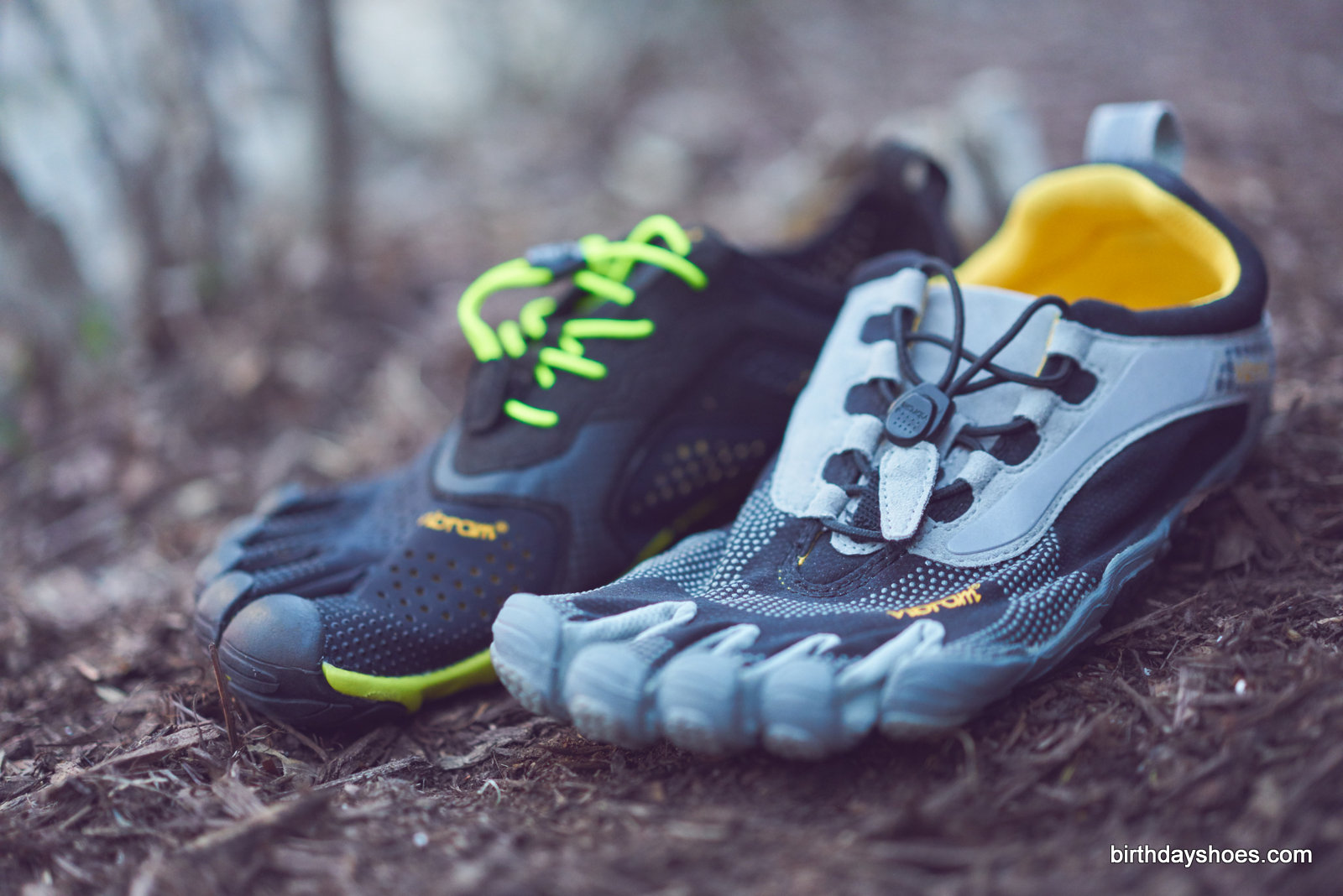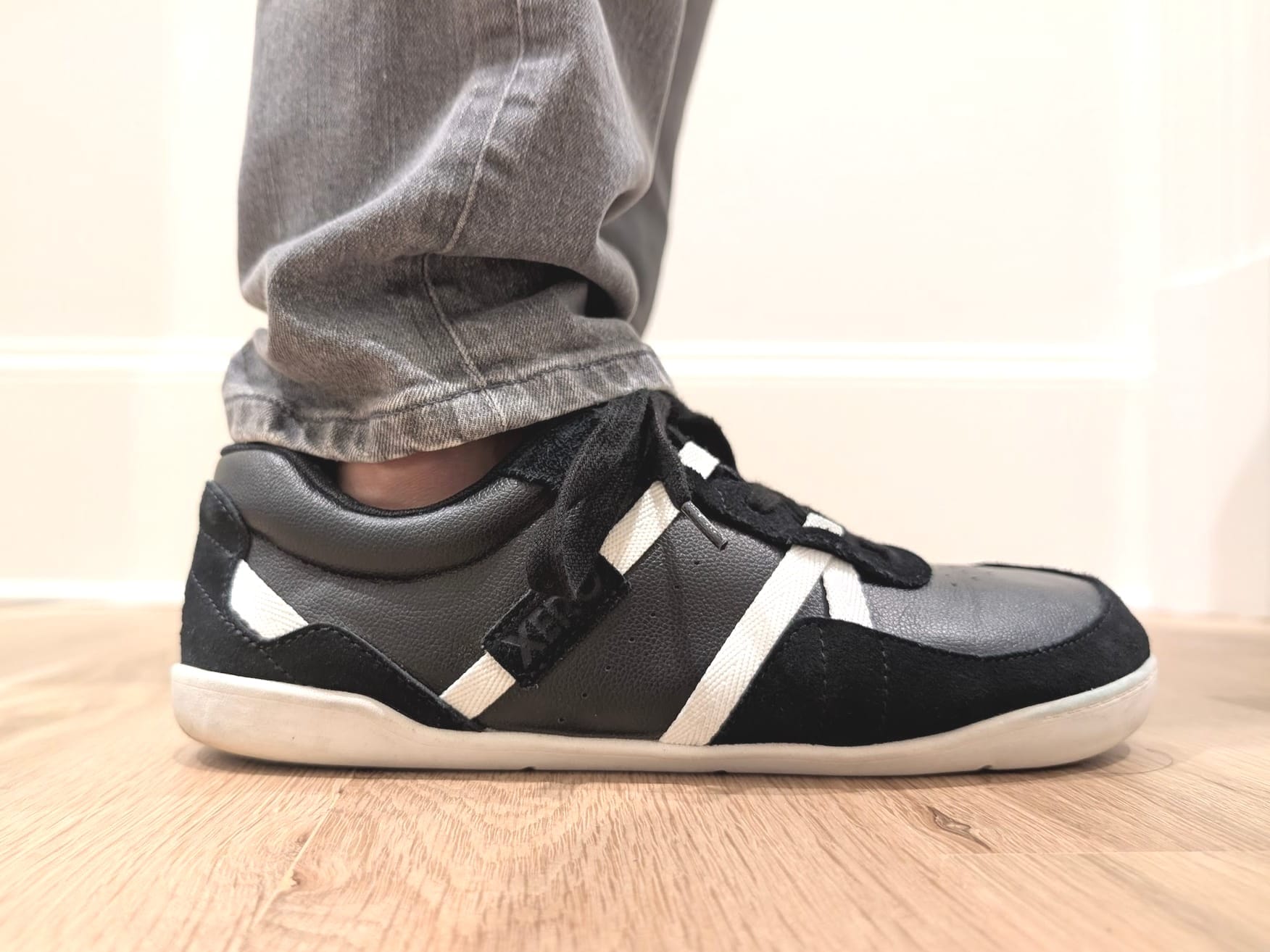Vibram FiveFingers V-Run (Bikila EVO update) Review!
Vibram’s dedicated road shoe received several upgrades this year and a new name, V-Run. With new upper and new sole materials, the already versatile Bikila EVO has been upgraded to handle warmer and cooler runs. Read on for my thoughts on the Vibram…

Vibram’s dedicated road shoe received several upgrades this year and a new name, V-Run.
With new upper and new sole materials, the already versatile Bikila EVO has been upgraded to handle warmer and cooler runs.
Read on for my thoughts on the Vibram V-Run!
What Vibram Says
NEW for Spring 2016! Redesigned with a softer upper and perforated to maximize breathability, this new age Bikila is now even more comfortable than the original. This is an ideal running shoe for those making the transition from traditional footwear to a more minimalist approach. The thin sole construction lets you feel your run, connecting you to the true barefoot running experience.
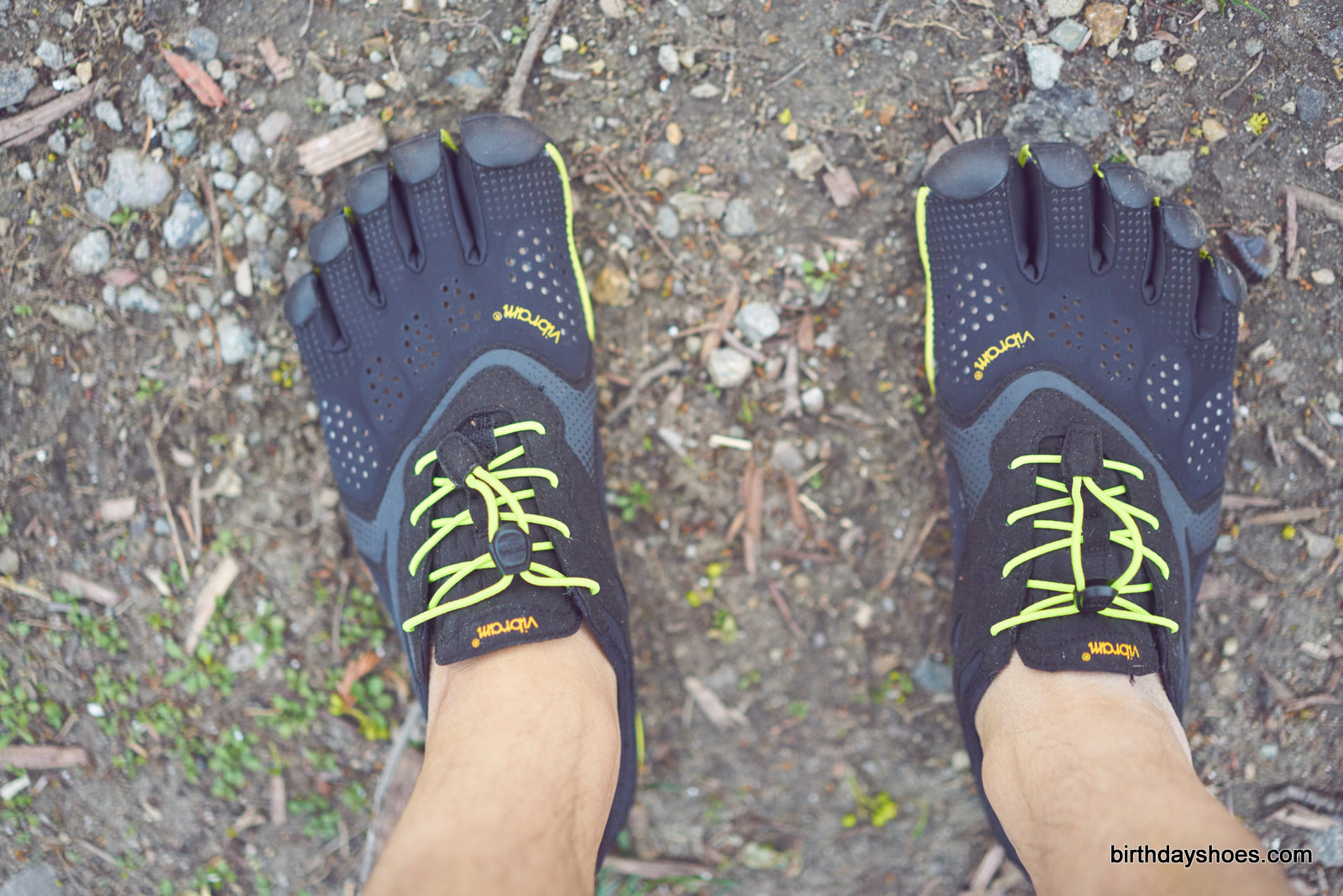
MSRP at time of review — $120 (Available for $101.96 at TravelCountry.com)
Weight — 4.38 oz - Vibram V-Run [vs 4.10 oz – Bikila EVO vs 5.74 oz - Bikila LS vs 3.74 - KSO EVO (EURO 41)]
Total Stack Height — 8.5mm (2mm EVA insole + 4mm EVA/Rubber hybrid (VI-LITE) + 2.5mm rubber outsole)
Barefoot scale — Good flexibility and a fairly thick stack height lends this shoe to a lot of versatility. Great for long distance runners and new runners alike.
Ideal Uses — trails, gym, late fall/early winter road running, and roads
Pros —
- Lightweight
- Very breathable
- Good flexibility
- Excellent grip
- Awesome uppers
Cons —
- Very specific foot and toe shape and volume
- Loose heel section
- Firmer sole than other Vibram models
Sizing — Sizing with the V-Run is the same as the Bikila EVO, which is true to size and an anatomically correct “average foot “shape; wide in the forefoot and narrower as you move down the shoe.
However, the sole is somewhat narrower than other models and the fit is somewhat specific as a result. If you have very wide feet, the internal sidewalls of the shoe may cause blisters.
Here are photos of the FiveFingers V-Run:
And here are the shoes on:
And here are some comparisons to prior Bikila models:
Sole
The V-Run uses a very similar 8.5 mm sole design to the original Bikila EVO, which is comprised of 2.5mm of floating rubber pods Rubber, 4mm of Vibram EVA/Rubber and 2mm of insole material.
This sole is basically the same sole as the Bikila EVO, but now many of its parts have proper compound names—the main addition is the use of MONT alongside the standard Vibram XS-Run rubber that was used in the Bikila EVO and most of Vibram’s shoes.
Vibram® XS RUN “provides a maximal stable hardness across a broad temperature range and the softness of the compound allows for expansive ground contact and grip across lug surfaces. XS RUN also provides high grip on smooth surfaces.”

The XS Run seems to be the same rubber as the TC-1 Rubber used in many models. It is a durable, grippy, and versatile rubber that is excellent for roads, indoor tracks, some trail work and slipper surfaces.
The XS Run rubber is aided by the addition of Vibram MONT, which seems to be some sort of rubber that is between the road-formulated XS-RUN and Vibram’s Ice Trek that has been used for all of its winter running shoes, including the previously reviewed Bikila EVO WP and Trek Ascent Insulated.
Vibram MONT® compound is “optimized for mountaineering, treking, acrobatic, works and motorbike racing. MONT is used to conquer the highest peaks in the world by offering the highest reliability on the most difficult terrain at low temperatures.”
Vibram does not specify which compounds are used for which parts of the floating rubber pods for the V-Run, but my best guess is that XS-RUN is used on three forefoot contact points and MONT is used for the toes and heel.
Unlike other Vibram models, and V-Run both features the typical Vibram rubber pods set on top of an EVA/rubber base. By placing the rubber in only the impact areas and leaving the remaining sections with just EVA allows the V-Run to be very lightweight. It is essentially the same weight as the nearly identically-designed Bikila EVO.
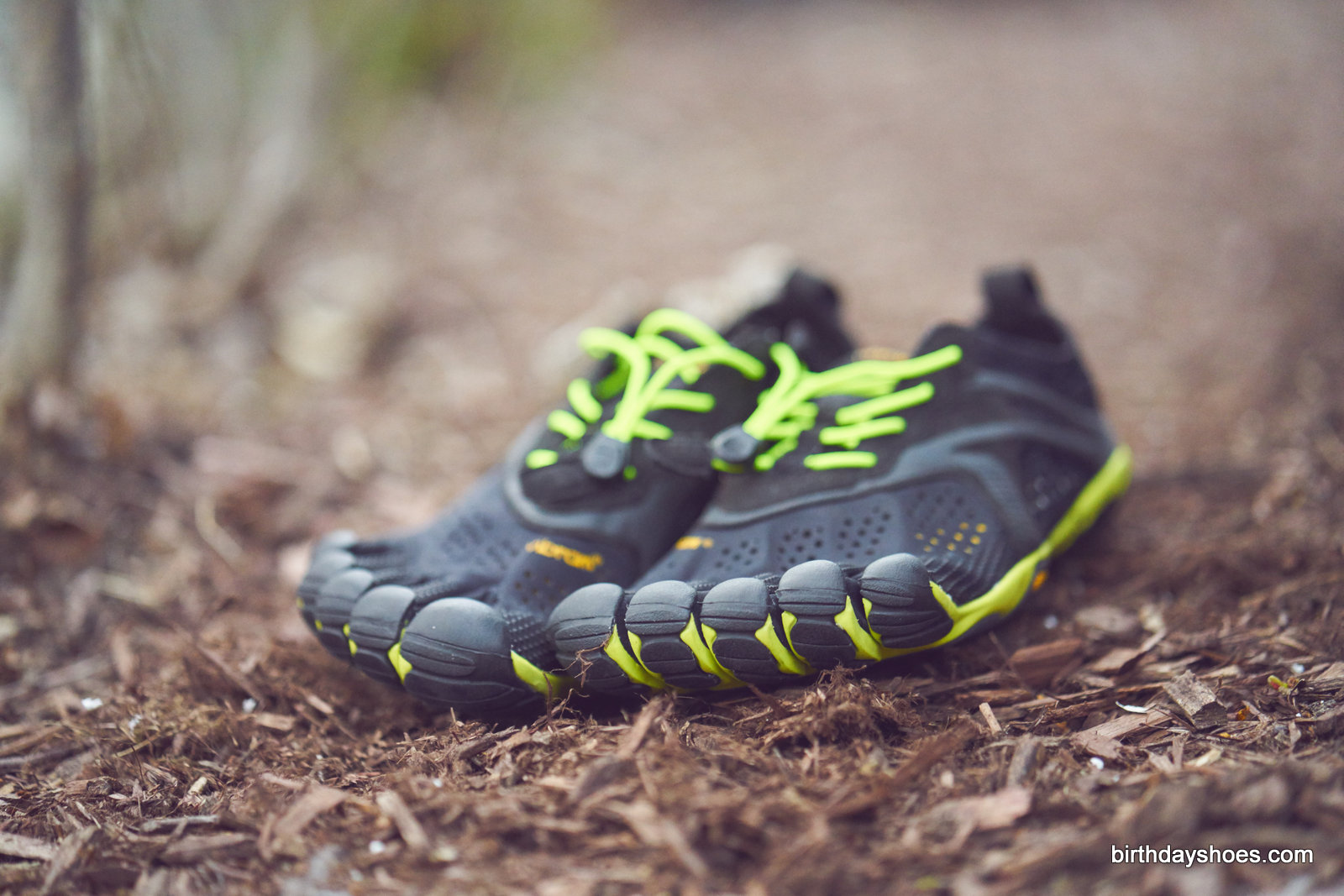
Unlike other running shoes, which rare expose their EVA foam, the Bikila EVO and V-Run feature bare EVA throughout roughly 30% of the sole.
Unlike traditional EVA, the EVA foam used by Vibram for their Bikila EVO and now the V-Run version 2.0 is actually a hybrid EVA with some Vibram rubber mixed into the compound to enhance its durability, strength, and resilience to what would normally be a very fragile material. In doing so, both the Bikila EVO and V-Run are lighter and more flexible than their rubber-only counterparts and predecessors.
While the hybrid compound has been around for a couple of years, the EVA/Rubber hybrid compound now has a name: Vibram® VI-LITE, which “features the ultimate in lightweight, shock absorption cushioning, for maximum energy conservation.”
Thanks in huge part to the horizontal flex grooves that are cut into the EVA/rubber sole, the V-Run is able to perform a downward toe flex like some of its thinner brethren (The EL-X, KSO EVO, and Seeya are all able to flex up and down).

Oddly enough, even though this is a road running shoe, the V-Run (and Bikila EVO it replaces) has a somewhat firm ride; much firmer than every other Vibram model. The EVA foam insole and VI-LITE compound do not have a lot of give and may take some getting used to. If your feet is the right shape, this is not a big deal, but if your feet are wider than the actual shoe (like myself), the sidewalls of both the shoe and its toes can cause some blisters over long runs. This is because the VI-LITE sole is sculpted to a specific shape and if you are not that exact shape; you will rub against the sculpting.
Performance
The V-Run is fastest shoe in the Vibram lineup. The toes are very flexible and the rubber pods provide plenty of grip on roads and traction on trails. My fastest shoes are my Mizuno Wave Universe 5 (at an incredible 2.9 oz!) and Merrell Vapor Glove 2, but the V-Run is just a few steps behind them. The V-Run's sole is far more versatile than the practically-track-specific Wave Universe 5, but more breathable and wider fit than the Vapor Glove.
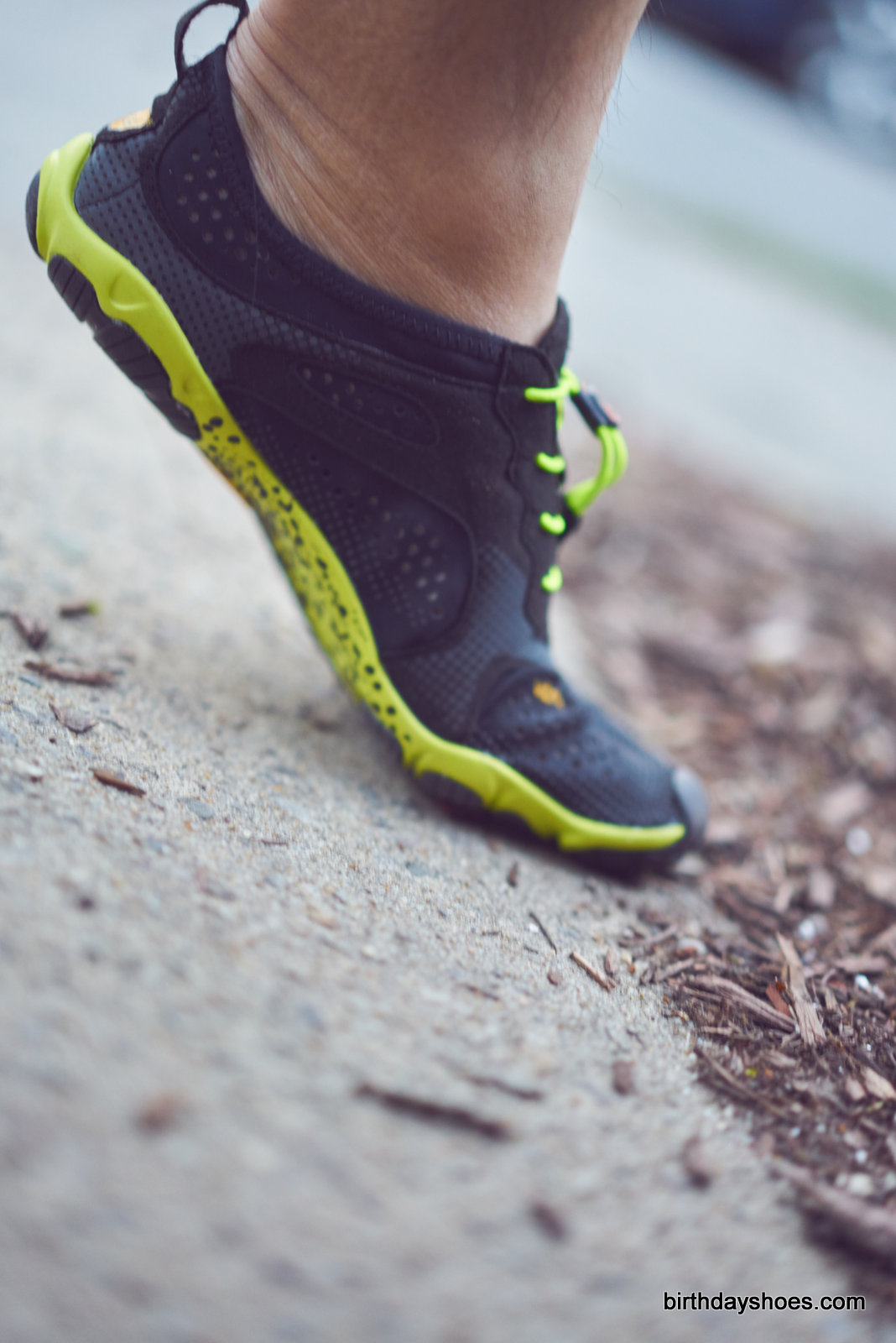
The V-Run can handle quite a bit more than just roads. The XS RUN rubber does just fine with rocks and trails--you really do not need to upgrade to the Spyridons or Trek Ascents for many of your off-road adventures, if you so desire. The new MONT compound should also extend the life of the shoe farther into colder months than the older Bikila EVO, provided the perforated uppers do not make your feet too cold.
Overall, this is a great road running shoe with lots of versatility.
Fit and Materials
Polyester Lycra Stretch Mesh + Polyester Microfiber
The V-Run has a completely redesigned upper with TONS of perforations for breathability. This is one of Vibram’s best uppers and a huge improvement over the slightly scratchy upper in the Bikila EVO. The polyester lycra stretch mesh seems very tough, super comfortable and very breathable. Just as the new MONT compound gives the V-Run improved cold-weather running capabilities, the new uppers provide extra comfort on hotter runs. Vibram continues to improve on “Vibram Funk” and this just might be the best solution to the issue of smelly shoes to date.
My favorite uppers were the Coconut Active uppers in the Bikila LS and the Polyester Fabric of the KSO EVO, but these might just be a bit better. The feeling against your bare skin is incredibly smooth and you really can feel the breeze through all the perforations in the shoe. If you have sweaty feet, these are great! As a side note, these uppers do let water in, but all of Vibrams mesh uppers do the same.
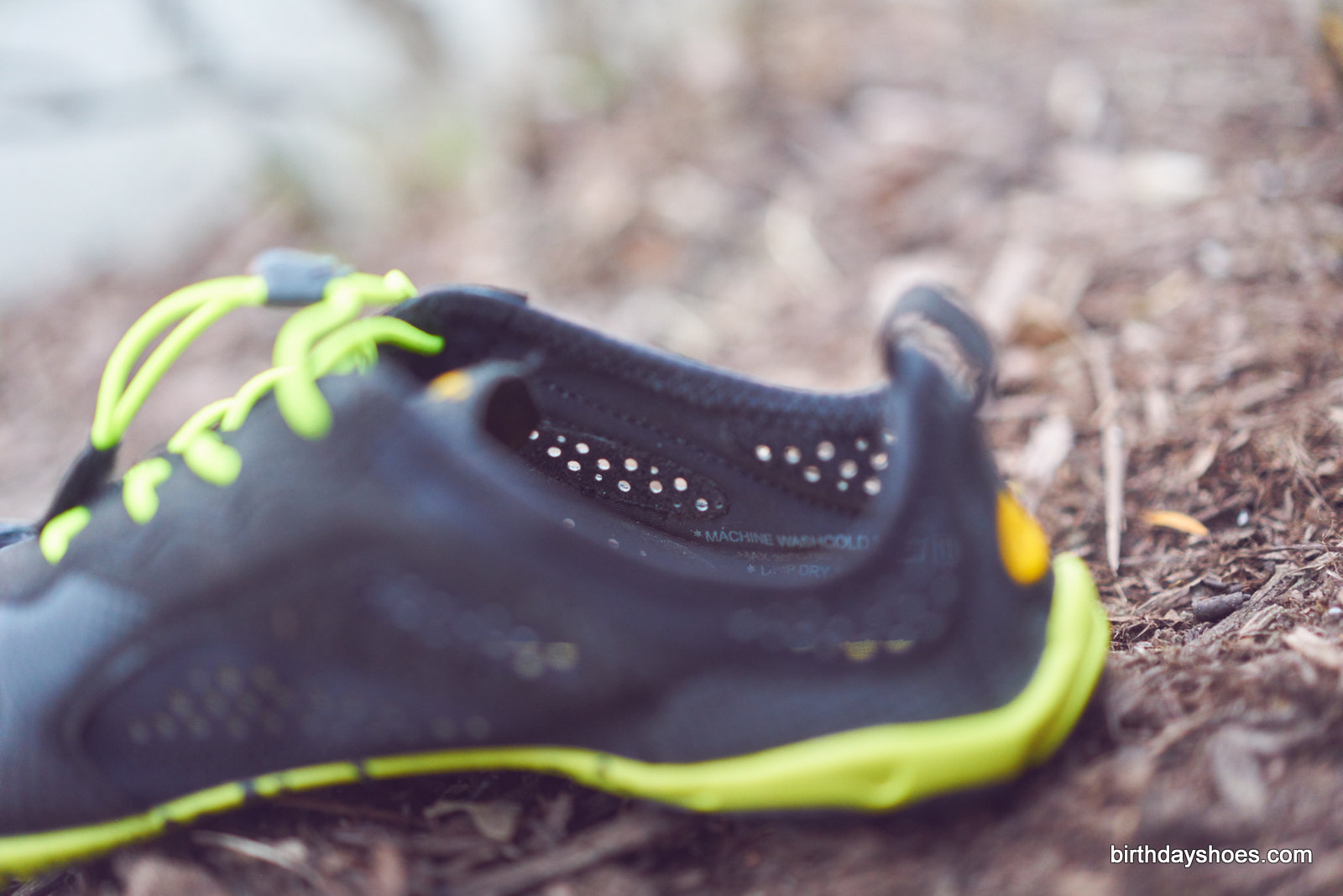
The tongue has also been improved to actually allow some air into the shoe. While the old Bikila EVO had perforations in its padded tongue, the holes were really just for show. Now, the V-Run has a less padded tongue, but the mesh is more breathable and more comfortable than before.
While Vibram updated upper of the Bikila EVO, they did not address one of the major issues with the Bikila EVO that was covered in our birthdayshoes review from two years ago, the way the heel fits.
There is still a dramatic swooping cut right below the ankle bone and the heel cup is too stretchy to feel secure when sprinting or cutting. The shoe won’t come off with aggressive movements, but it feels like it will. The Bikila LS had and awesome padded heel collar that was comfortable for long runs, but stiff enough to stay on your feet. Unfortunately, some of the weight saving that Vibram did when they created the Bikila EVO was to streamline that heel, but that was one of the best things about the original Bikila and the V-Run update was a great opportunity to address this nagging issue from the EVO.
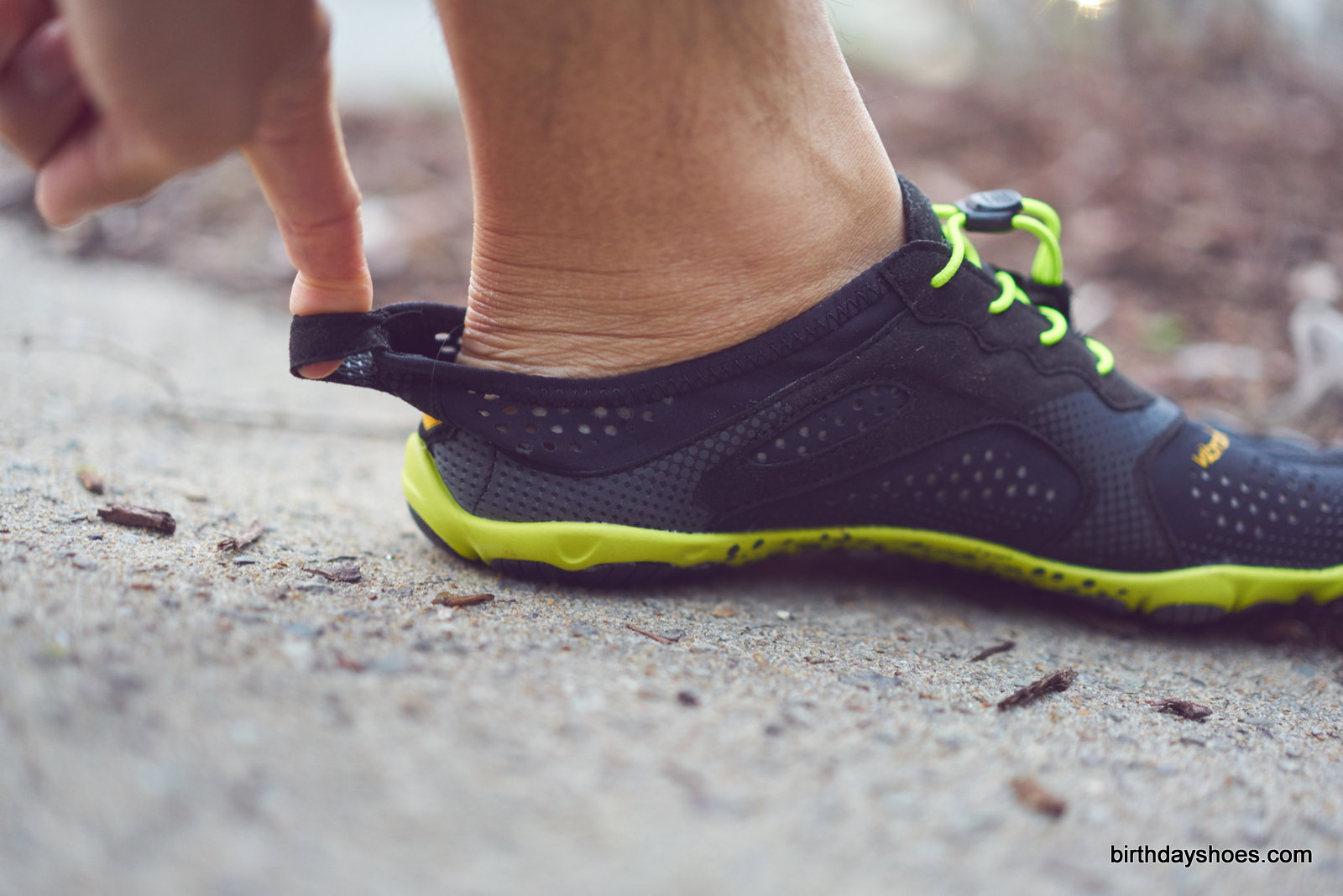
As stated earlier, the V-Run (and Bikila EVO) have very specific foot and toe shapes. If you do not quite fit the mold (literally), the walls of the molding may rub quite a bit on the sides of your feet (especially on the inner forefoot) and the sides of your toes. I have wide feet, very wide feet, and manly dinosaur toes and they do not quite fit. It is not so much that my toes do not fit inside the pockets—they are quite voluminous and should fit a variety of toe lengths and shapes, but the actual molding of the toes in the sole create little walls that press quite a bit on my toes as I run. Of course, this is an issue that would only affect someone if they have toes like mine, but I believe that a truly flat sole and flat toe area would make more a much more accommodating shoe.
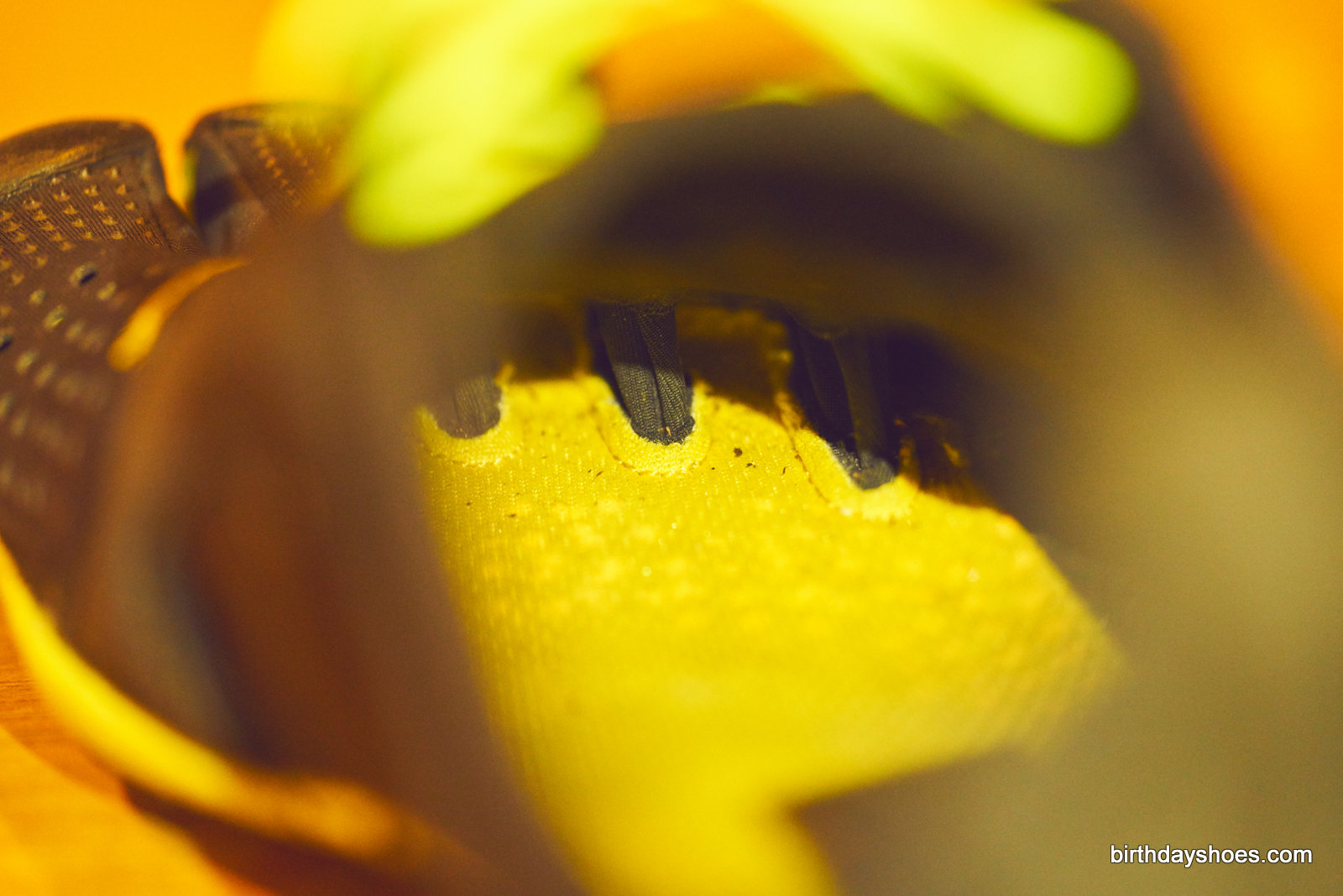
In many ways, I wish that Vibram never discontinued the Bikila LS. That shoe had a completely flat interior and a super secure padded collar, which made it Vibram’s best running shoe even after five years of new models and replacements.
The V-Run has many improvements over the Bikila EVO, which was a great shoe in its own right, but there are still some other nagging issues that prevent it from becoming THE road shoe in the Vibram lineup. That honor is still held posthumously by the Bikila LS or the KSO EVO.
Summary
Vibram made their dedicated road runner even better!
The Vibram V-Run gives road runners many improvements from the Bikila EVO. It is more breathable for summer runs, has better low-temperature traction for winter runs, but not much else.
If you were a fan of the Bikila EVO, you are going to love this shoe. And while they MSRP for $120, it looks like you can pick them up for $101.96 for now via TravelCountry.
If you had issues with the fit or the heel, then this will not be fore you. I recommend grabbing the KSO EVO or finding a pair of Bikila LS online at some warehouse site or ebay.
Overall, Vibram improved the Bikila EVO about 80%, but the importance of that last 20% will vary depending on your foot shape, toes, and heel.
